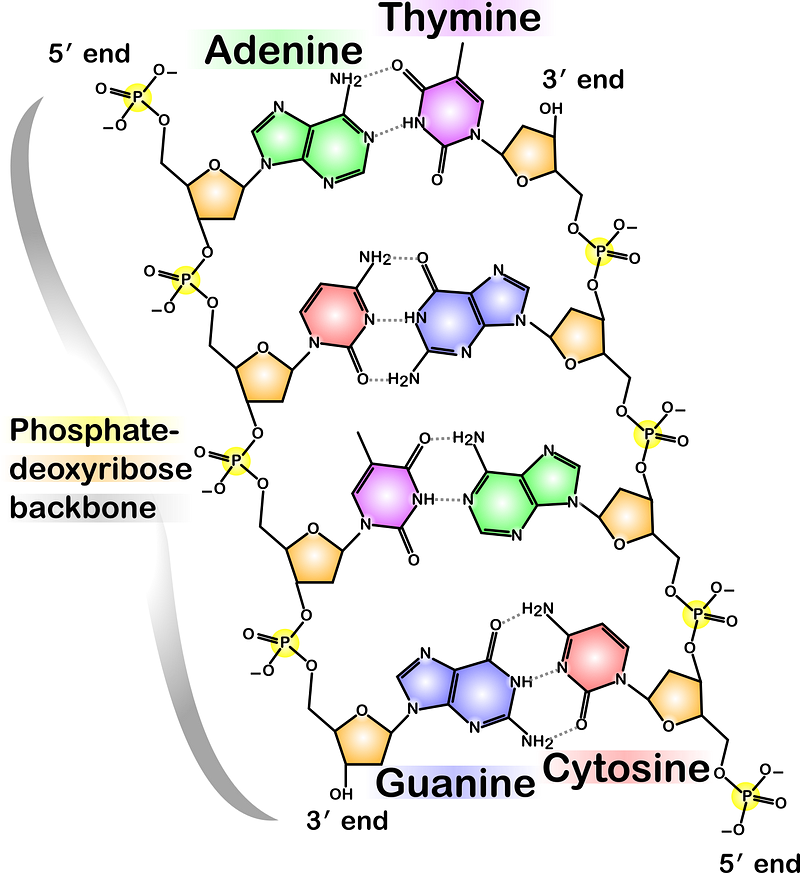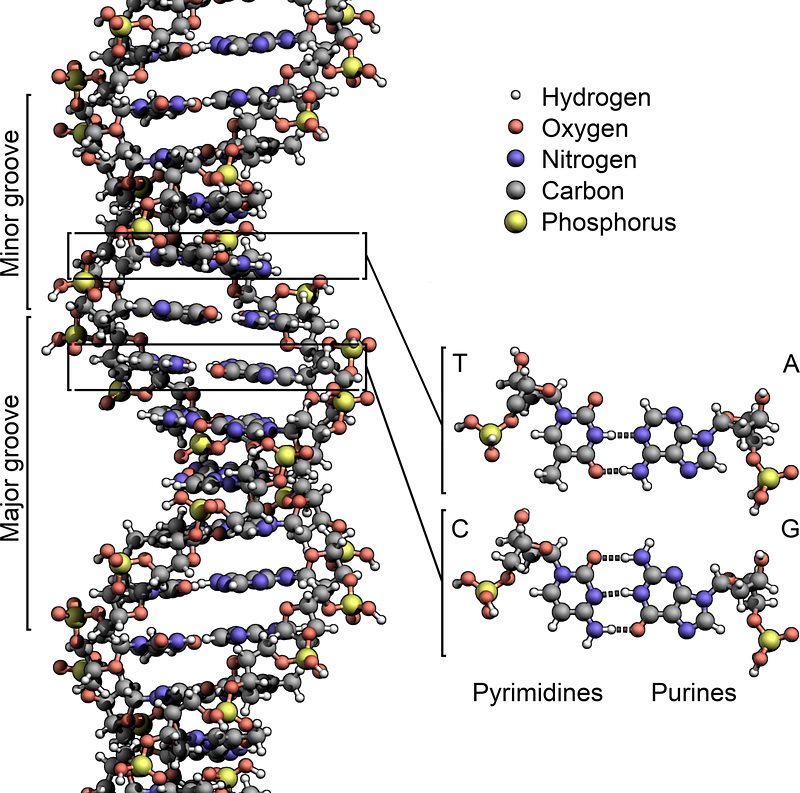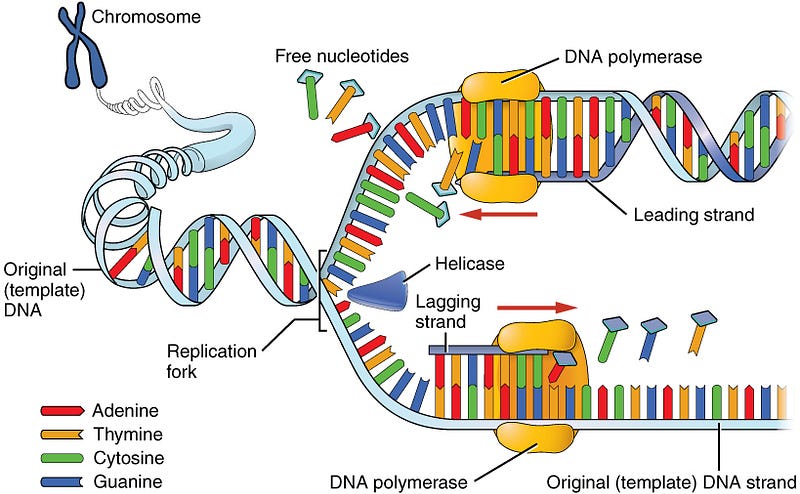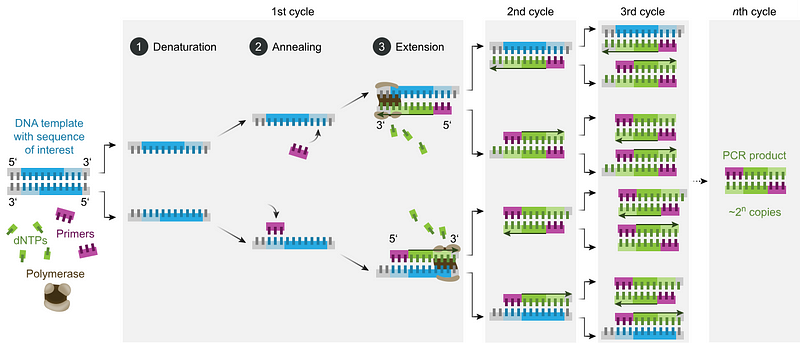A Comprehensive Overview of Polymerase Chain Reaction Techniques
Written on
Chapter 1: The Genesis of PCR
On a late April night in 1983, a biochemist from Cetus Corporation was navigating a winding road in northern California's Mendocino County, with a co-worker asleep beside him. His thoughts were consumed by DNA sequencing experiments, and he was on the cusp of a groundbreaking discovery—the polymerase chain reaction (PCR). This innovative technique would revolutionize molecular biology and profoundly impact fields such as medicine and biotechnology.
The visionary behind this discovery was Kary B. Mullis. His invention enabled the amplification of virtually limitless amounts of specific DNA sequences, ultimately earning him the Nobel Prize in Chemistry in 1993. Initially, Mullis aimed to provide molecular biologists with ample material for unraveling the complexities of DNA and molecular genetics.
Section 1.1: Understanding DNA Structure
To effectively replicate DNA, one must grasp a few fundamental concepts about its composition.
DNA is a lengthy chain constructed from four nucleotides: adenine, guanine, cytosine, and thymine (abbreviated as A, G, C, and T). The arrangement of these four nucleotides encodes the genetic information essential for protein synthesis, which are the functional units within our cells. Typically, DNA exists as two intertwined strands, where one strand pairs with a complementary strand—A with T, and C with G.


The dashed lines in the images represent weak hydrogen bonds that hold the two strands together. Each DNA strand has a directionality, designated as 5’ at one end and 3’ at the opposite end. The complementary strands run in opposite 5’-3’ orientations, which is crucial for designing PCR reactions.
Section 1.2: Enzymatic Machinery for DNA Replication
To generate numerous copies of DNA during PCR, we harness the natural capabilities of enzymes—biological catalysts perfected through billions of years of evolution.
DNA replication is a fundamental process in all living cells, allowing genetic information to be passed to subsequent generations. Central to this process is DNA polymerase, a complex molecular machine. The necessary raw materials for copying DNA are individual nucleotides, each represented as dATP, dTTP, dCTP, or dGTP (deoxyadenine triphosphate, etc.), collectively referred to as dNTPs.
The DNA polymerase synthesizes a complementary DNA strand by linking the dNTPs to the template strand it is "reading."

However, DNA polymerases cannot initiate synthesis from a bare single strand. They require a short complementary DNA fragment, known as a "primer," to begin copying.
Chapter 2: Techniques for Melting and Annealing DNA
For PCR to function effectively, it is essential to rapidly separate and rejoin the two DNA strands. This is achieved through the manipulation of temperature.
The weak hydrogen bonds that hold the double-stranded DNA together can be disrupted by the vibrational energy of heated water. By raising the temperature of the solution containing DNA, we can "melt" it, effectively separating the strands. Conversely, lowering the temperature allows the strands to "anneal" or rejoin if their sequences are complementary.
The first video titled "PCR (Polymerase Chain Reaction) Tutorial - An Introduction" provides a comprehensive overview of the PCR process, ideal for beginners.
Chapter 3: Assembling the PCR Reaction
Now that we understand the essential components and temperature sequences, we can delve into the PCR reaction itself.
A PCR reaction includes two critical elements: the chemical components and the temperature cycling program.
The primary components include:
- Water: The major component, as biological reactions occur in aqueous environments.
- DNA template: The specific DNA from which a region is being copied.
- DNA polymerase: The enzyme responsible for DNA replication.
- dNTPs: The building blocks for creating DNA copies.
- Primers: Short sequences of DNA that flank the targeted region and initiate the copying process.
- Buffer: A solution containing necessary materials for optimal enzyme performance, including bivalent and monovalent cations and a pH buffer.
The temperature cycling consists of:
- Melting (or denaturing) temperature that separates double-stranded DNA into single strands, typically at 94–98 °C for 20–30 seconds.
- Annealing step where primers bind to specific regions of the target area, usually at 50–65 °C for 20–40 seconds.
- Elongation step where DNA polymerase synthesizes the new DNA strand at an optimal temperature, often around 75–80 °C for Taq polymerase.

It's noteworthy that the denaturing temperature approaches water's boiling point, a condition most proteins cannot endure. However, Taq polymerase, sourced from the heat-loving bacterium Thermus aquaticus, thrives under these extreme conditions.
Chapter 4: Recap of PCR Methodology
PCR stands out as a critical technique for amplifying specific DNA regions. The essential components and steps include:
- Components: DNA polymerase, template DNA, dNTPs, primers, buffer, and water.
- Temperature Steps: Melting, annealing, elongation, and repeated cycles for amplification.
The second video titled "PCR (Polymerase Chain Reaction) - Theory & Practical Tips" offers valuable insights into practical applications and theoretical underpinnings of PCR.
Chapter 5: Conclusion
I hope this overview proves useful to others, especially my friend joining me in the lab. For further reading, check out the additional articles in this series, each designed to enhance understanding of molecular biology:
- Practical Introduction to Molecular Biology
- Practical Introduction to Biochemistry
- Practical Introduction to Genetics
- Practical Introduction to Electrophoresis for Biology
- Old-School Molecular Cloning